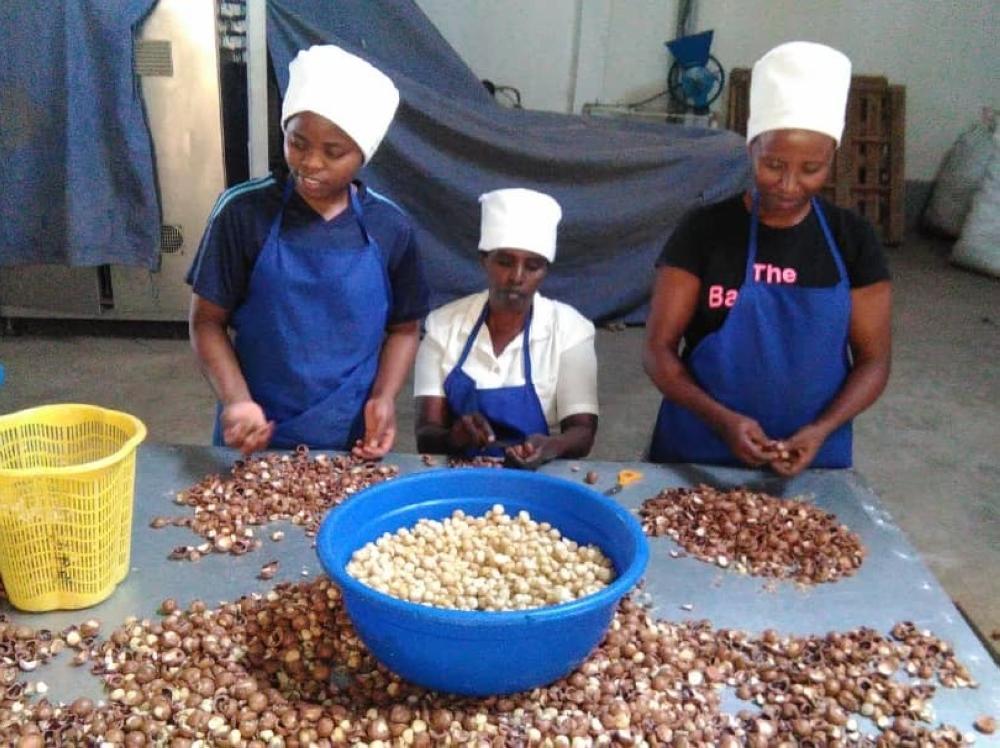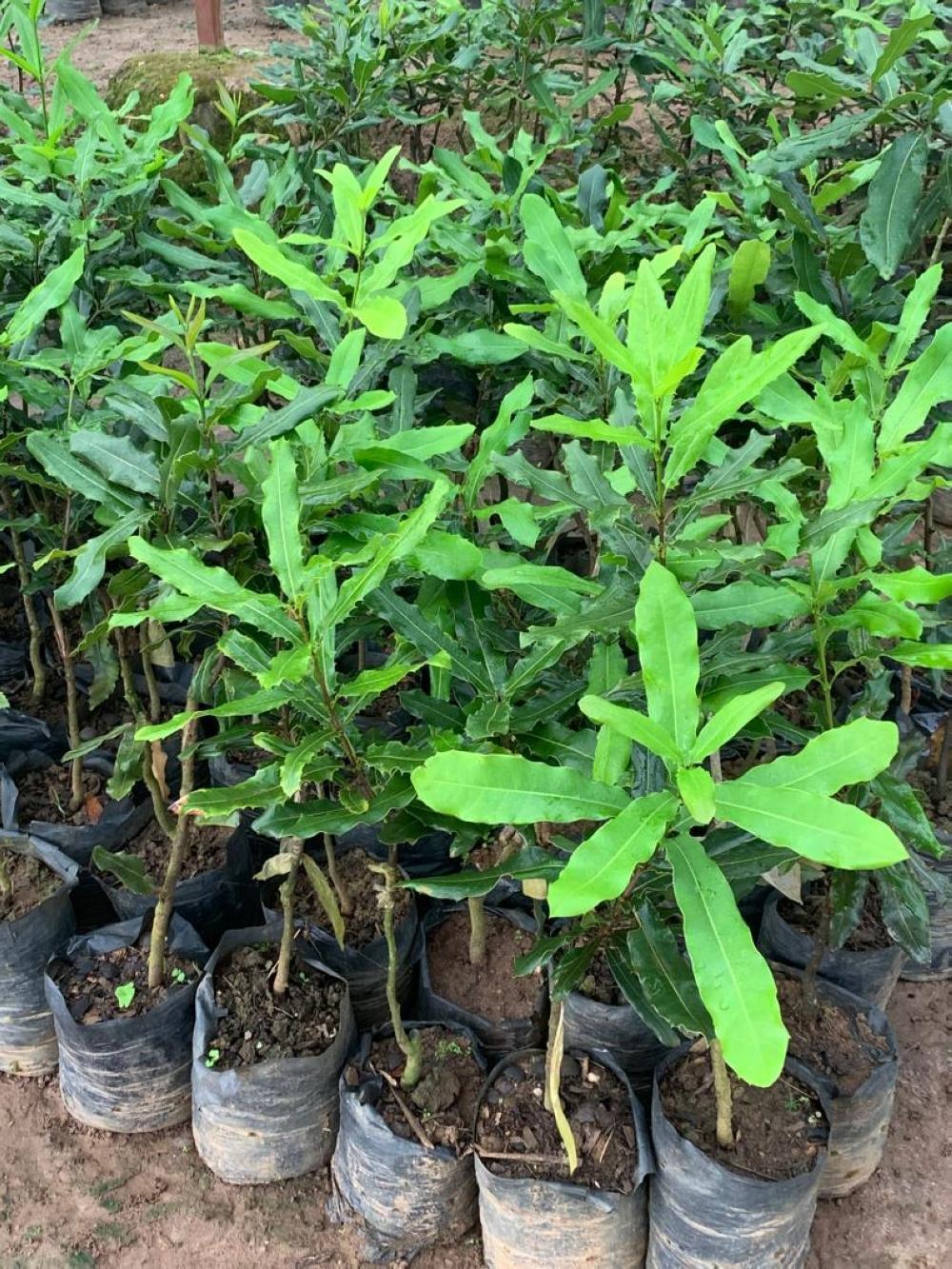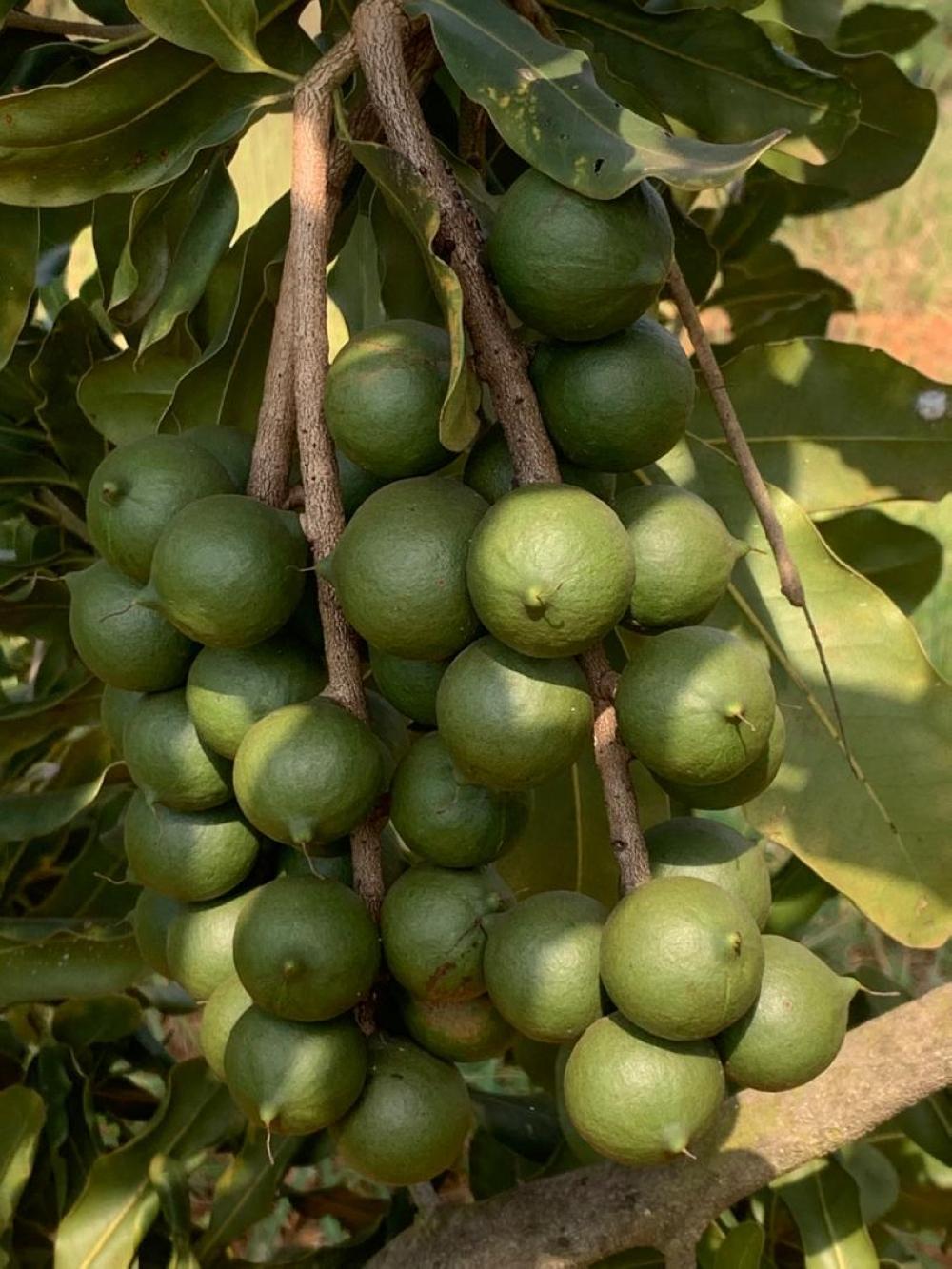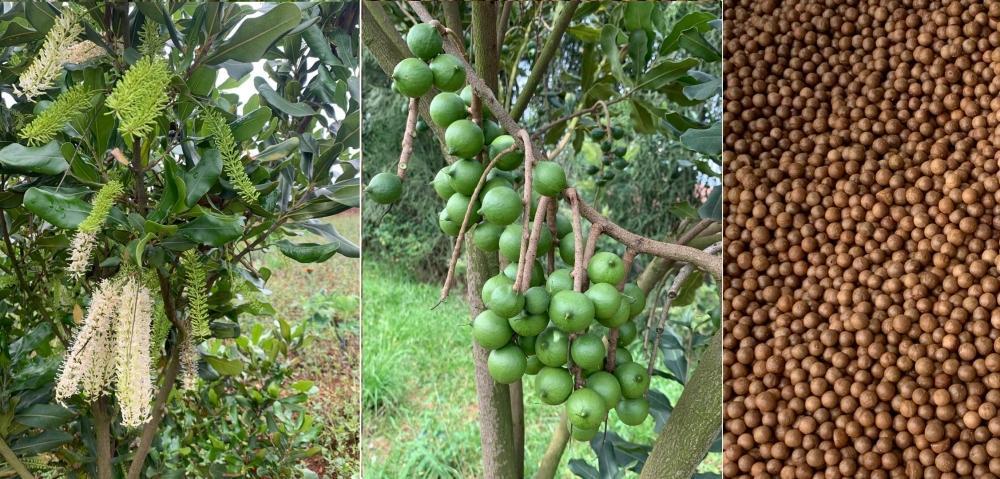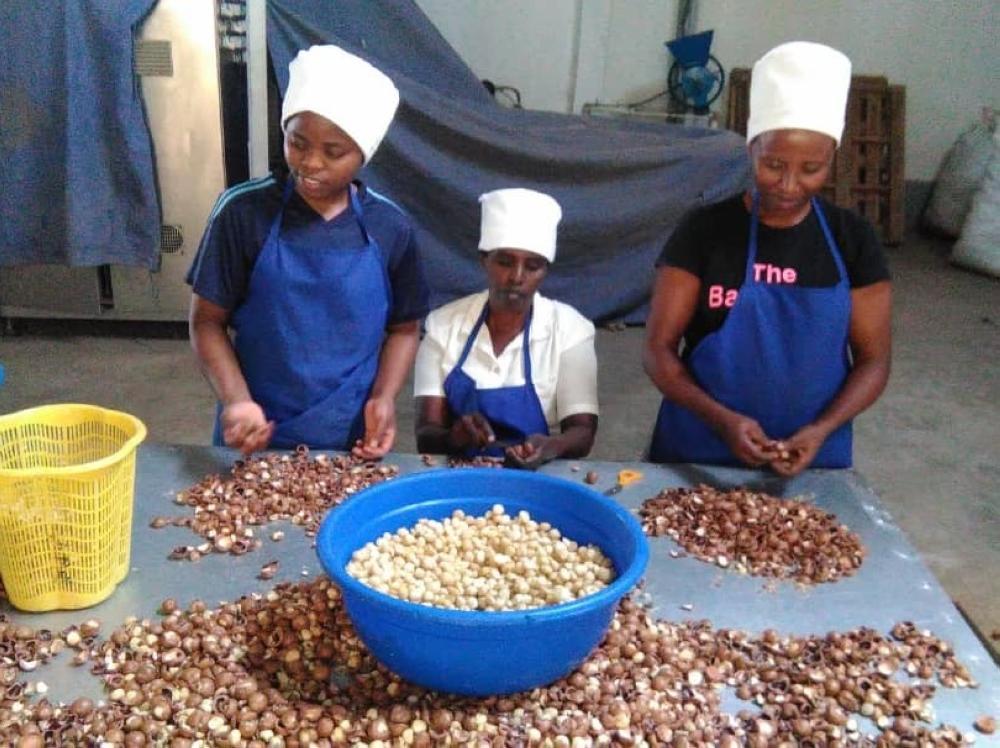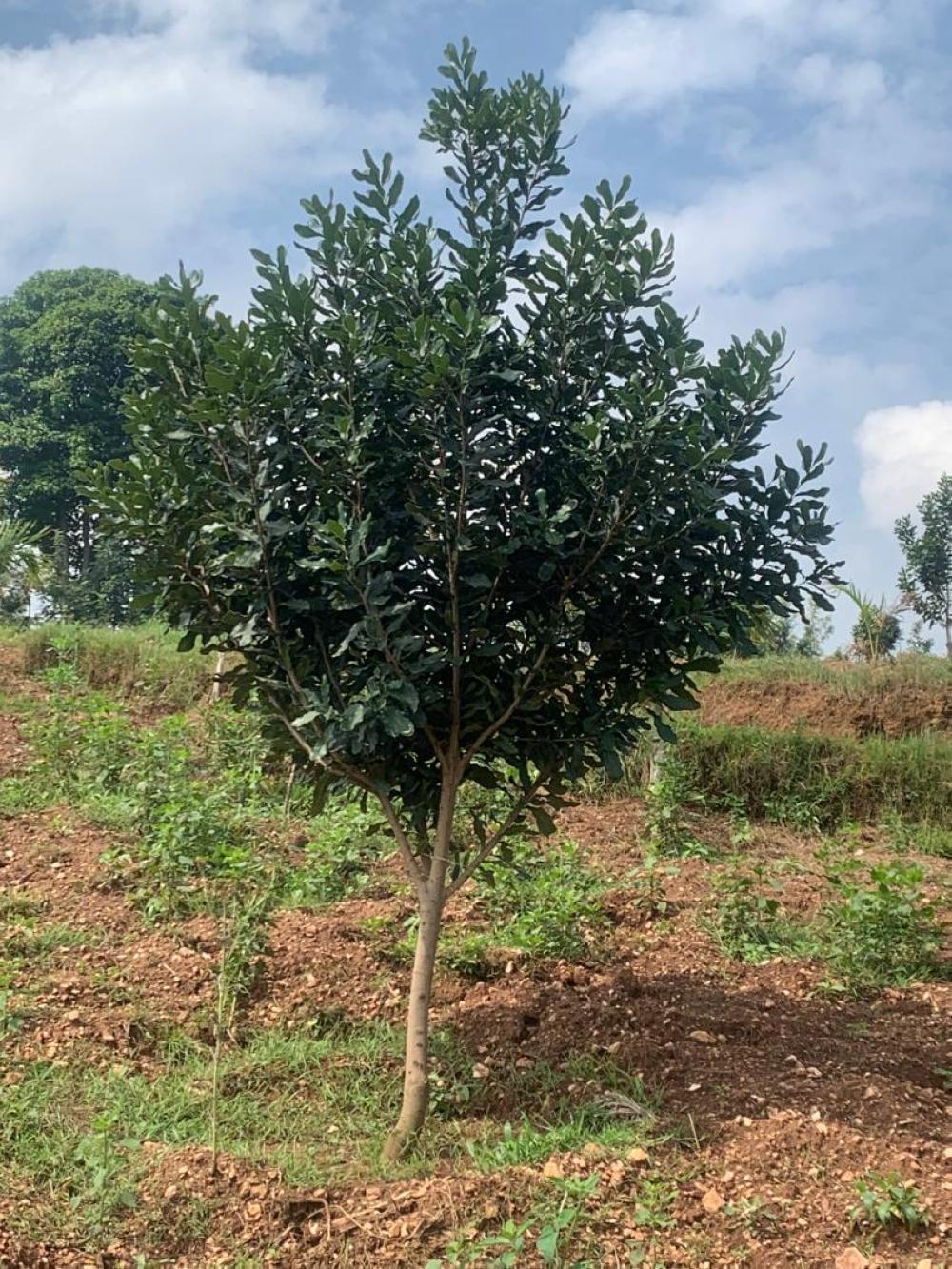Africa-Press – Rwanda. Once hailed as a promising cash crop, macadamia is now facing a silent decline in Rwanda, leaving farmers and processors grappling with falling prices, pest infestations, and a lack of support that once sustained the industry.
Innocent Ndagijimana, a macadamia farmer in Muyumbu Sector, Rwamagana District, has grown the crop for 17 years. He says the challenges facing the sector are growing more daunting each season.
“I farm on a plot of 5 ares. Macadamia still provides some income, but the situation has worsened,” he told The New Times. “Pests are attacking the seeds, and while we try to control them, pesticides are too expensive, as I spend more than Rwf130,000 annually. Accessing them is a real struggle.”
Just two years ago, the outlook was optimistic. With macadamia selling at Rwf2,000 per kilogramme, Ndagijimana would harvest 300kg and earn Rwf600,000 a year. Today, despite doubling his harvest to 600kg, the market price has dropped to just Rwf1,100 per kilo.
The cost of pesticides has surged too, while their effectiveness seems to have waned.
“I’m spending far more than I did in the past, but earning much less. There needs to be a regulation on pesticide prices, and both pesticides and fertilisers should be subsidised,” he lamented.
The struggles in macadamia farming, he said, made him stuck in the same size he was cropping on in the last ten years.
Alice Harinyana, Marketing Manager at Norelga Macadamia Rwanda Ltd, a macadamia processing facility in Masoro Sector, Gasabo District, shared similar concerns.
She noted that macadamia trees typically begin producing after five years and can be harvested every three months thereafter, if well-maintained.
“In our early years, especially when we started in 2011, we benefited from government subsidies that covered irrigation and fertilisers. But that support has faded,” she explained.
“Irrigation is especially difficult now. The trees are often grown on hillsides, where traditional systems don’t work well, and there are no subsidies to support better alternatives,” she added.
Decline in international demand
According to Harinyana, the growing impact of pests on production and the limited export opportunities, coupled with declining demand on international market has made it hard for macadamia producers to thrive.
“Before Covid-19, we used to export our produce to several countries, including China. Since the pandemic, international demand has collapsed. We now process and sell locally,” she said.
Norelga Macadamia Rwanda operates on a three-hectare plantation, harvesting approximately 3,071kilogrammes of macadamia nuts annually. They also purchase nuts from local farmers, buying only top-quality produce their machines can process, at Rwf1,500 per kilogramme.
“Out of every 100kgs we receive, around 6kgs are discarded due to pest damage or poor quality. That figure has doubled since we shifted from manual processing to machine-based systems,” Harinyana noted.
Norelga Macadamia Rwanda operates on a three-hectare plantation, harvesting approximately 3,071kilogrammes of macadamia nuts annually
Stanley Nsabimana, Chairperson of the Macadamia Society of Rwanda, who cultivates the crop on a 10-hectare plantation in Masoro Sector, Rulindo District, said the sector’s current struggles largely stem from the lack of subsidies on inputs such as chemical fertilisers, seeds and pesticides.
“Irrigation is another challenge that farmers like. During the dry season, we depend on dams to collect and store water from the rainy months,” he said.
Nsabimana highlighted that before the Covid-19 pandemic, macadamia could fetch up to $2 per kilogramme on the farm price. Today, the price has dropped to just $1, which means that farmers have to double their production to maintain their income stream.
“The cost of inputs is overwhelming. A litre of organic pesticide goes for Rwf30,000, and it can only cover about 10 trees. Each tree needs to be sprayed at least three times a year. With over 2,000 trees on my farm, you can imagine the expense,” he explained.
He added that macadamia seedlings are significantly more expensive than those of other fruit trees.
“A single seedling costs around Rwf4,000. Compare that to an avocado seedling, which costs Rwf1,000 and is even subsidised, meaning farmers can get it for Rwf500. Macadamia farmers need the same kind of support,” he said.
Nsabimana called for government intervention to subsidise and make fertilisers, pesticides and seeds more accessible, especially if Rwanda is to meet its ambitious expansion targets for the crop.
Int’l price volatility
The international macadamia market has been volatile since Covid-19, leading to lower export volumes and farm gate prices in Rwanda (now Rwf1,200–1,400/kg, down from Rwf2,000/kg in 2019).
According to Jean Bosco Mulindi, the Emerging Commodities Division Manager at National Agricultural Export Development Board (NAEB), this is due to reduced global demand, increased production from China, and the lack of a direct trade agreement with China, which previously forced Rwandan exports through third parties.
However, in May 2025, Rwanda secured a bilateral trade protocol with China, enabling direct market access and is expected to improve returns for exporters and farmers.
According to NAEB, macadamia cultivation in Rwanda is spread across 25 districts, with higher concentrations in the Eastern and Southern Provinces.
Current data shows approximately 1,156 farmers are cultivating around 289,824 macadamia trees, which equates to an estimated area of 1,420 hectares.
Workers sort macademia fruits in Rwanda. Norelga Macadamia Rwanda operates on a three-hectare plantation, harvesting approximately 3,071kilogrammes of macadamia nuts annually.
Macadamia export revenues have decreased over the years.
The revenue income in 2019/2020 was $1,929,261, $2,102,908 in 2020/2021, $2,028,738 in 2021/2022, $1,873,270 in in 2022/2023, before declining further ot $1,371,734 while in 2023/2024.
The current key export markets are are Vietnam, Japan, the US, Uzbekistan, and China.
Rwanda plans to increase the area under macadamia cultivation from 605 hectares in the 2024–2025 fiscal year to 933 hectares by 2028–2029, according to the Agriculture Ministry’s Fifth Strategic Plan for Agriculture Transformation (PSTA5).
The Ministry first introduced macadamia in Rwanda in 2004.
For More News And Analysis About Rwanda Follow Africa-Press

